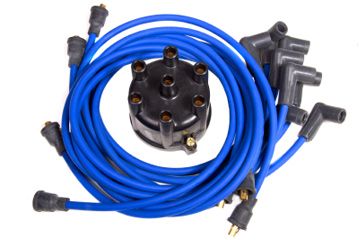The ignition coil is the part of your engine that produces high voltage in order to power your cylinders. The distributor is what gets that high voltage from the coil to the right cylinder. The connection is accomplished through a cap and rotor. The ignition coil connects to the rotor, and the rotor spins around inside the cap. The coil passes a high-voltage pulse through the rotor each time it passes a contact in the cylinder, transferring its power to the engine. The pulse makes its way across a little gap between the rotor and the contact, and it then travels down to the spark plug on the cylinder via a spark-plug wire.
Some of the older distributers have an additional part in their bottom section. This part breaks the current that's going to the coil. The coil's ground side connects to breaker points, which are connected by a lever to a cam in the middle of the distributor. When the lever is pushed by the cam, the coil loses its ground and creates its high-voltage pulse. The breaker points are also responsible for the spark's timing.
Advertisement
The timing is critical to proper engine performance. Usually there's a short delay between the time that the spark goes off and the time that the fuel and air mixture in the cylinder reaches its maximum pressure. The spark has to happen before the piston makes it to the top of its compression stroke so that the there's enough pressure in the cylinder for the spark to be effective. If the spark happened when the piston was at the top of its stroke, by the time it reached the mixture the piston would already be on its way back down and the maximum pressure would be lost.


